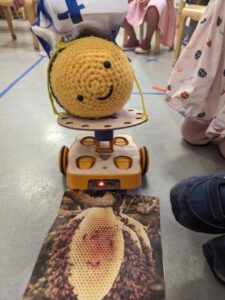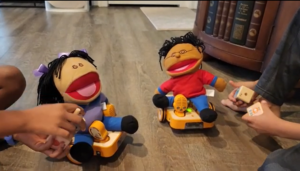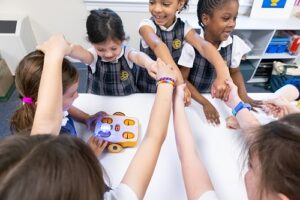A First Grade Class’ KIBO Journey
Contributed by: Chani Lichtiger, Director Educational Technology, Yavneh Academy, Paramus, NJ, http://www.yavnehacademy.org/

When first graders at Yavneh Academy in Paramus, NJ use KIBO, they learn a whole new form of communication that translates into every aspect of their academic and social activities. The first graders in Laya Levine and Rahel Grebler’s class used KIBO to further their thinking about various units of study. In the process, they learned to sequence, analyze, and organize their ideas. They also gained introductory programming, collaboration skills and an appreciation of roles.
Yavneh’s first graders used their KIBO robots to explore and enhance their units of study. For example, while learning about the Native Americans, KIBO visited model teepees, a Pilgrim home, and a garden. After some practice with the basics skills of programming and scanning, the class began to incorporate the light sensor into their thinking about animals. The students learned that birds migrate south in the winter. They created birds which they used to decorate their KIBOs. Then, they used the light sensors to help their robotic birds travel to warmer climates. Similarly, while studying nocturnal animals, the parameter “until light” was incorporated so that the “animals” would not come out of their homes until the light of the moon appeared.
Additionally, students worked in small groups and became familiar with the sound sensors and the Wait for Clap block. While the students sang “If You’re Happy and You Know It” they programmed their KIBO to dance upon hearing the clap.
The collaboration and high level planning and problem solving skills are evident throughout this process. When the KIBOs are being used, the energy in the room is charged with the students working together to learn the new programing skills and combine it with previous knowledge.
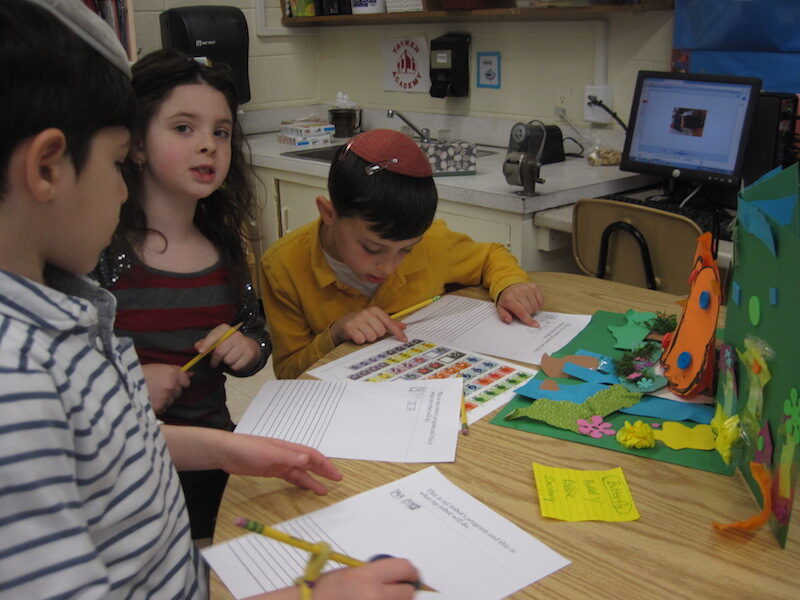
At the end of each session, the students gather in a circle on the floor and express their learning, any problems they encountered and the solutions they developed while programming their KIBOs. Each student kept a journal entry for every lesson in their Engineering Design Journal. This enhanced their writing skills and kept them focused on the topic at hand. With each lesson the students have become more proficient in programming, scanning, problem solving and collaborating. The atmosphere continues to be engaging and inspiring, where everyone is successful.
“There is so much teamwork, planning, strategizing, and trial and error. The room is alive with children completely engaged in hands on learning. It is an incredible opportunity for our class, “ Laya Levine, a first grade teacher at Yavneh Academy, expressed. Through KIBO, the students have learned coping and persistence. They have gained skills that will support them throughout their academic careers in and outside of school.
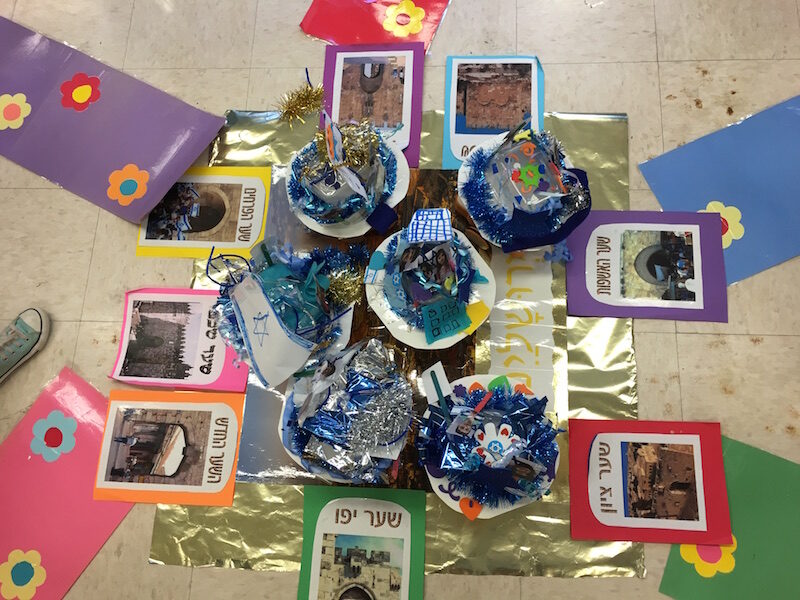
In the same class, Rahel Grebler, the Judaic studies teacher, incorporates KIBO programming in her curriculum throughout the year. As a culminating project, the students are divided into small groups. Each group is responsible to “dress” their KIBO for Yom Yerushalayim (Jerusalem Day). Then students plan for their road trip from different locations in Israel to their specific gates of Jerusalem. A large visual map is placed in the center of the classroom floor, with roads leading to the gates. Each KIBO is then programmed to leave their specific location, for example, Tel Aviv or Haifa, and continue down the road through their respective gates. Each group has a special Israeli song which they sing as the KIBOs arrive. The excitement in the room is palpable and adds to the mood of this exciting day. The learning that takes place as a result of KIBO is concrete and makes the students’ understanding of the subject quite clear.



















